Special Report
9 Companies That Turned Their Fortunes Around in 2018
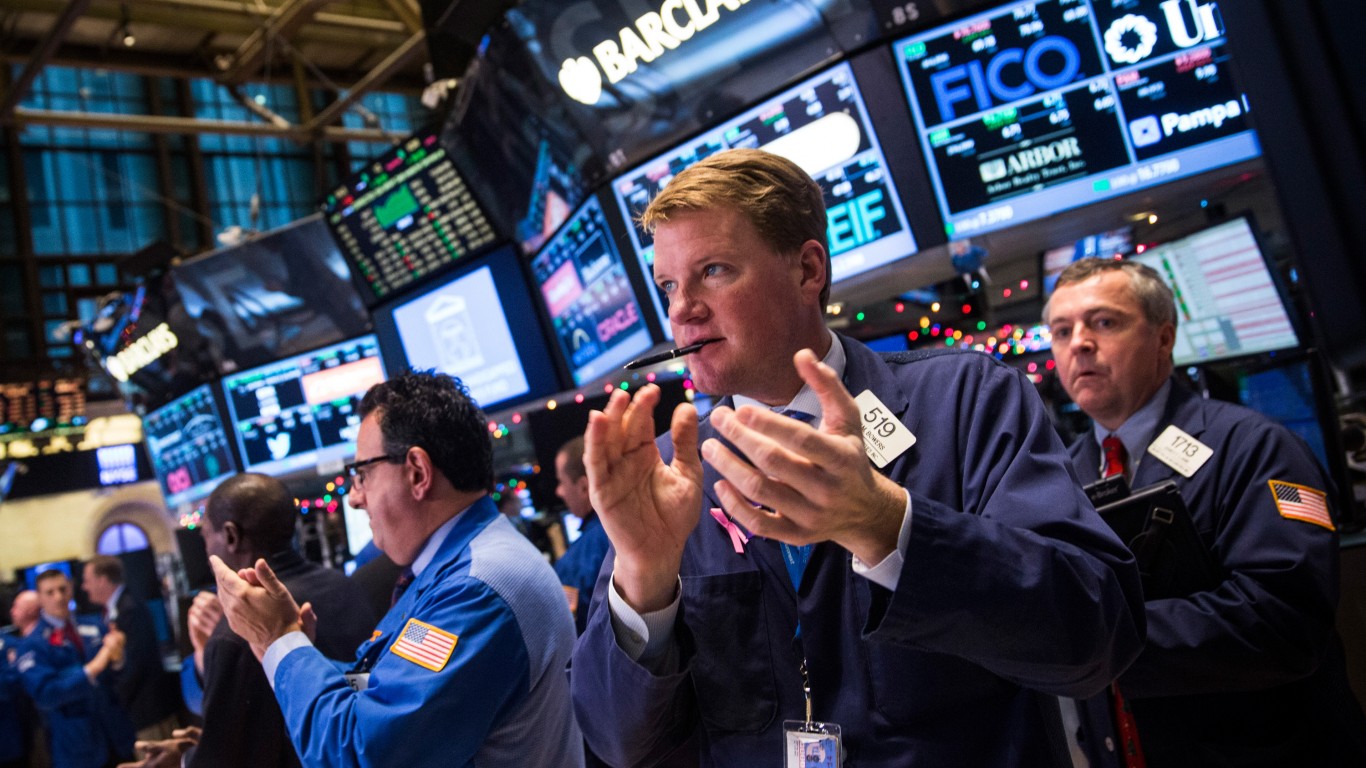
Published:
Last Updated:

2018 has been one of the most volatile years for stocks in recent history. From the start of the year through April there have been 28 days in which the S&P 500 rose or fell by more than 1%, more than three times the amount of 1%-days in all of 2017. In such a volatile market, a handful of companies whose stocks had posted declines as of late managed to stage major comebacks, and in many cases saw their stock prices reach record highs.
Most stocks had a shaky start to the year. The S&P 500 fell 10% in the first few months of the year, only to rebound and eventually reach the highest point in its 61-year history on Sep. 17, 2017. Some of the factors that affected equity markets this year were concerns over a potential U.S.-China trade war, the specter of rising interest rates, the threat of a government shutdown, and depressed oil prices.
Most stocks that rebounded in 2018 did so on the heels of better-than-expected earnings reports that beat Wall Street projections. Some companies whose stocks may have gotten a boost from strong quarterly earnings reports and positive guidance include Coca-Cola, Procter & Gamble, and Walgreens.
To determine the nine companies that turned their fortunes around in 2018, 24/7 Wall St. reviewed major publicly-traded companies traded on the NYSE or NASDAQ stock exchanges. Companies that had declining stock priced in 2017 or early 2018, and then significant share price growth throughout much of 2018 were included. Share price data collected for the screen is as of December 20, 2018. Only companies that beat 2018 earnings per share estimates in 2018 were included.
Click here to see the 9 companies that turned their fortunes around in 2018
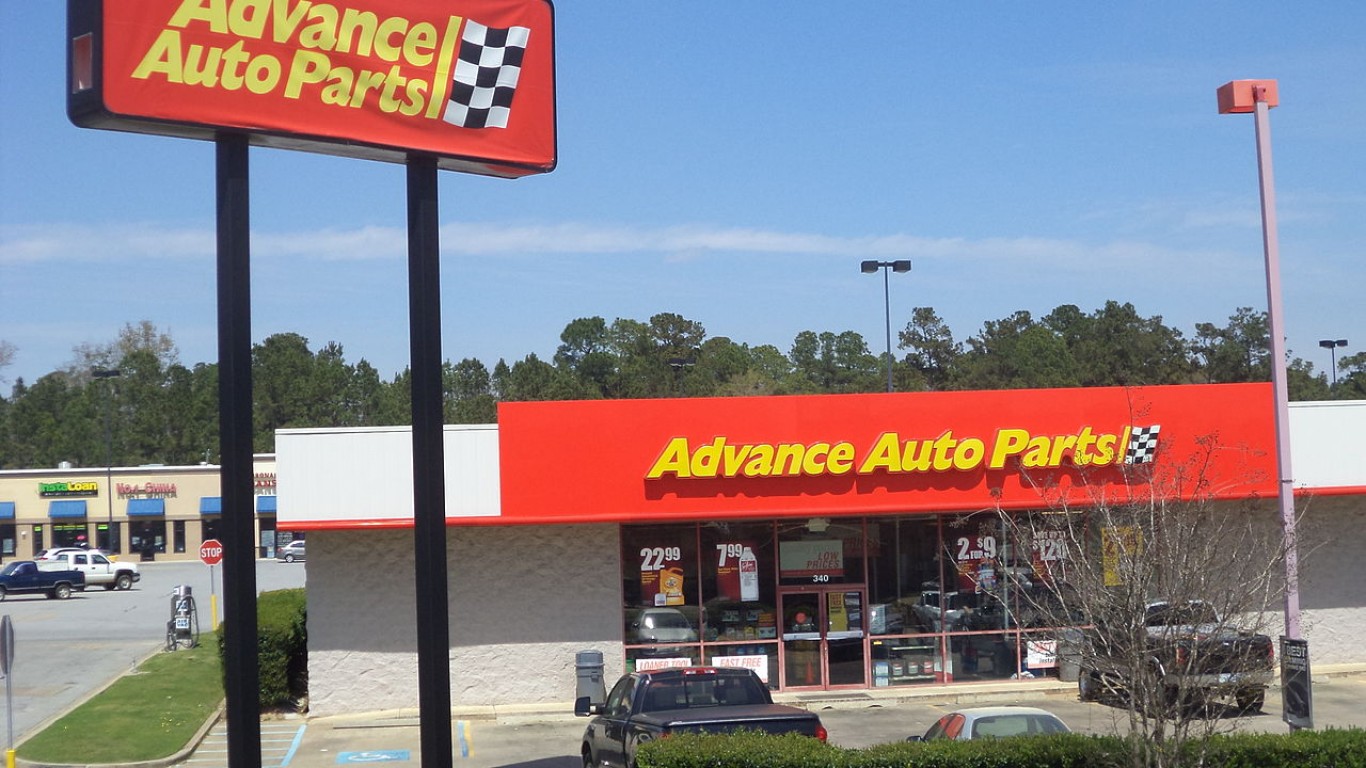
1. Advance Auto Parts, Inc. (NYSE: AAP)
> Current stock price: $152.50
> Latest annual revenue: $9.37 billion
> Industry: Specialty retail
image-subject=Advance Auto Parts, Inc.
In early 2017, shares of Advance Auto Parts began plummeting. They traded at $175 per share in January, and by October of that same year had lost more than half their value. As of the end of 2018, shares were back up close to $180. While the company reported quarterly gross profits in excess of $1 billion only once through the third quarter of 2016 to the fourth quarter of 2017, the company posted profits above $1 billion in the first three quarters of 2018. A big source of the fear surrounding the nation’s largest auto parts retailer had been concerns that Amazon was going to muscle in on its business. However, the company appears to be surviving Amazon’s onslaught.
[in-text-ad]
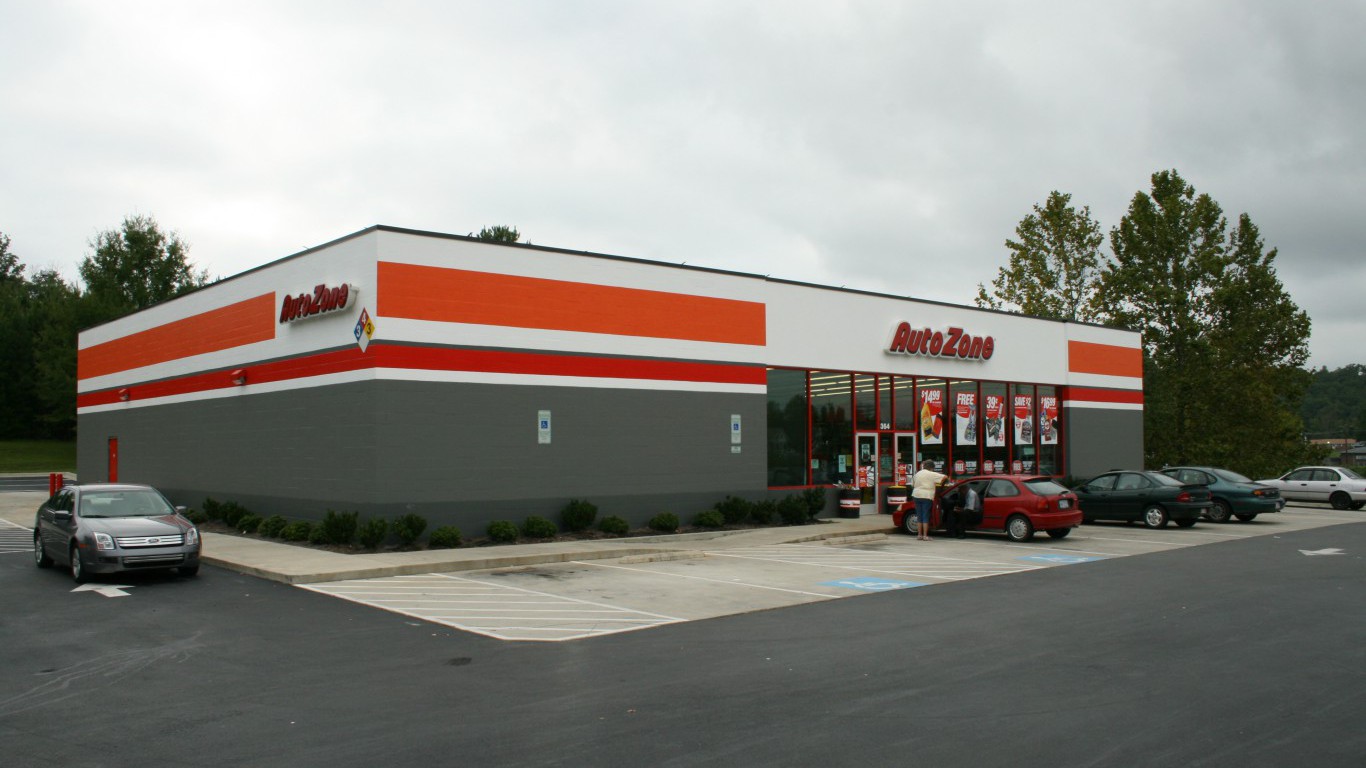
2. AutoZone, Inc. (NYSE: AZO)
> Current stock price: $824.65
> Latest annual revenue: $11.22 billion
> Industry: Specialty retail
image-subject=AutoZone, Inc.
AutoZone shares fell by over 30% from December 2016 to July 2017, dropping to its lowest point in over three years. The decline occurred concurrently with a decline in profit. The drop in profit was due in part to declining same-store sales and delayed tax refunds from the IRS.
Like competitor Advance Auto Parts, Autozone’s stock has rebounded in the past year. The stock price surged 65% from July 4, 2017 to December 17, 2018, and is currently at its highest point since its 1991 IPO.
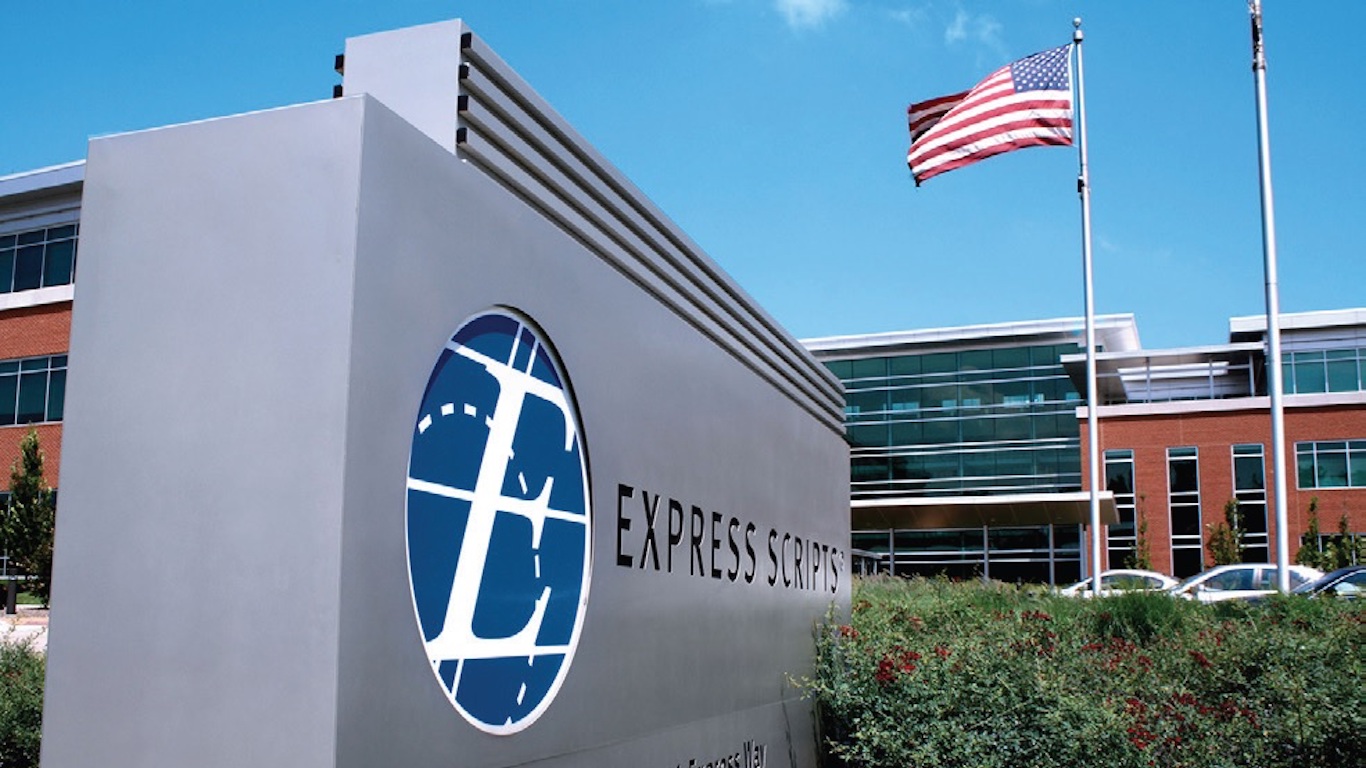
3. Express Scripts Holding Company (NASDAQ: ESRX)
> Current stock price: $92.33
> Latest annual revenue: $100.07 billion
> Industry: Health care
image-subject=Express Scripts Holding Company
Express Scripts is one of several health care companies whose stock price has rebounded in 2018. The stock price fell slowly over the past several years, sliding by approximately 40% from July 2015 to October 2017. Since then, Express Scripts stock price has surged over 60% — in approximately half the time of its multi-year decline — and now sits at its highest point since its 1992 IPO. The increase occurred shortly after the Justice Department approved a proposed merger between Express Scripts and fellow health service company Cigna in September 2018, and was concurrent with a 27% rise in profit from the third quarter of 2017 to the third quarter of 2018.
4. Merck & Company, Inc. (NYSE: MRK)
> Current stock price: $73.22
> Latest annual revenue: $40.12 billion
> Industry: Pharmaceuticals
image-subject=Merck & Company, Inc.
In early April 2018, drugmaker Merck share price hit $53.36, its lowest level in more than two years. It has been on a steady upward trend since, though the stock’s value has dipped slightly in recent weeks. From its April 2 trough to its November 26 peak of $79.34, Merck’s share price soared by nearly 50%. The company has beat Wall Street earnings estimates handily in each of the last four quarters. Merck stock performance is likely due in part to the rising of Keytruda, its new cancer treatment drug. Keytruda is the only drug in its class approved to treat all non-small-cell lung cancer diagnoses — which accounts for about 80% of all cases.
In early April 2018, drugmaker Merck share price hit $53.36, its lowest level in more than two years. It has been on a steady upward trend since, though the stock’s value has dipped slightly in recent weeks. From its April 2 trough to its November 26 peak of $79.34, Merck’s share price soared by nearly 50%. The company has beat Wall Street earnings estimates handily in each of the last four quarters. Merck stock performance is likely due in part to the rising of Keytruda, its new cancer treatment drug. Keytruda is the only drug in its class approved to treat all non-small-cell lung cancer diagnoses — which accounts for about 80% of all cases.
[in-text-ad-2]
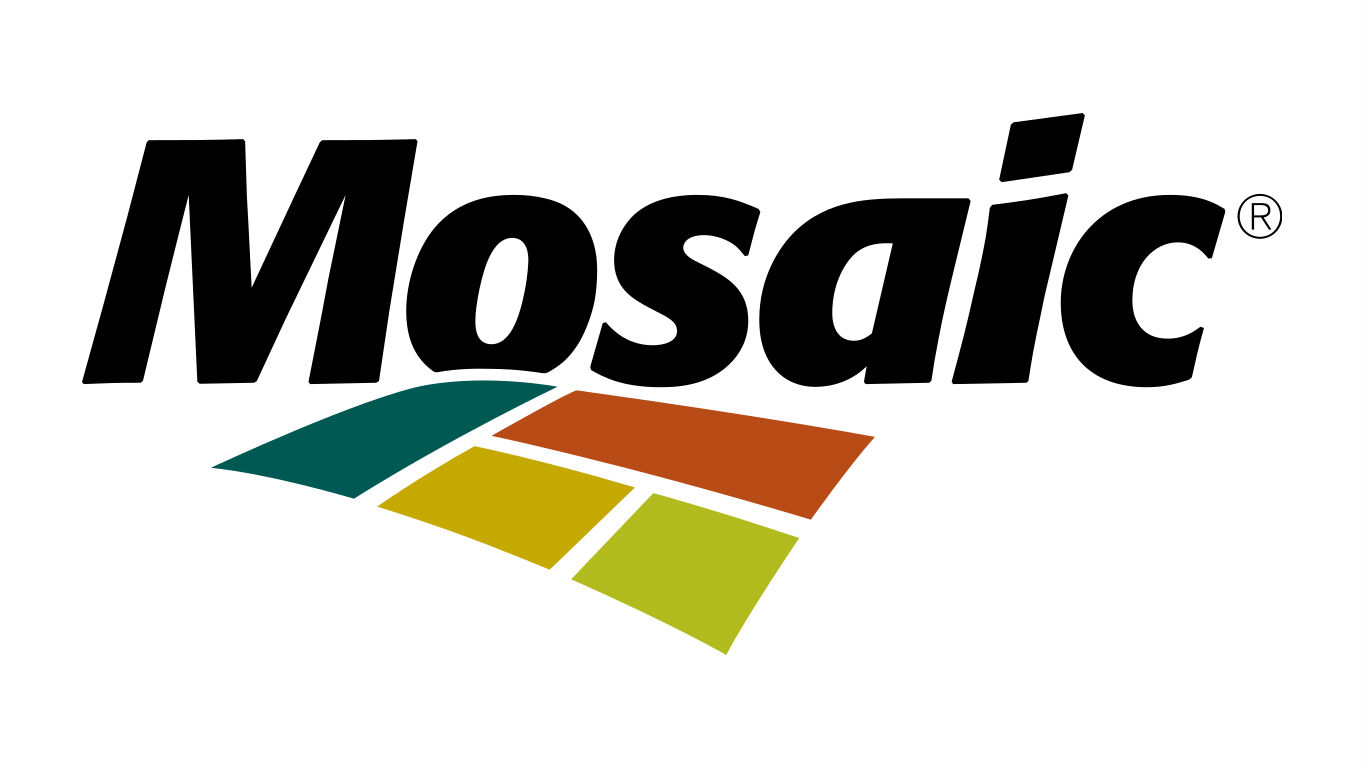
5. Mosaic Company (NYSE: MOS)
> Current stock price: $28.39
> Latest annual revenue: $7.41 billion
> Industry: Chemicals
image-subject=Mosaic Company
The Mosaic Company produces concentrated phosphate and potash crop nutrients used in agriculture, particularity in grain crop and cattle feed. Until the major selloff that began in December, The Mosaic Company share price has been on an upward trend since the spring -though it had a minor selloff in October. From a 2018 trough of $24.22 per share in April, the company’s share price climbed 51% to a peak of $36.67 in November.
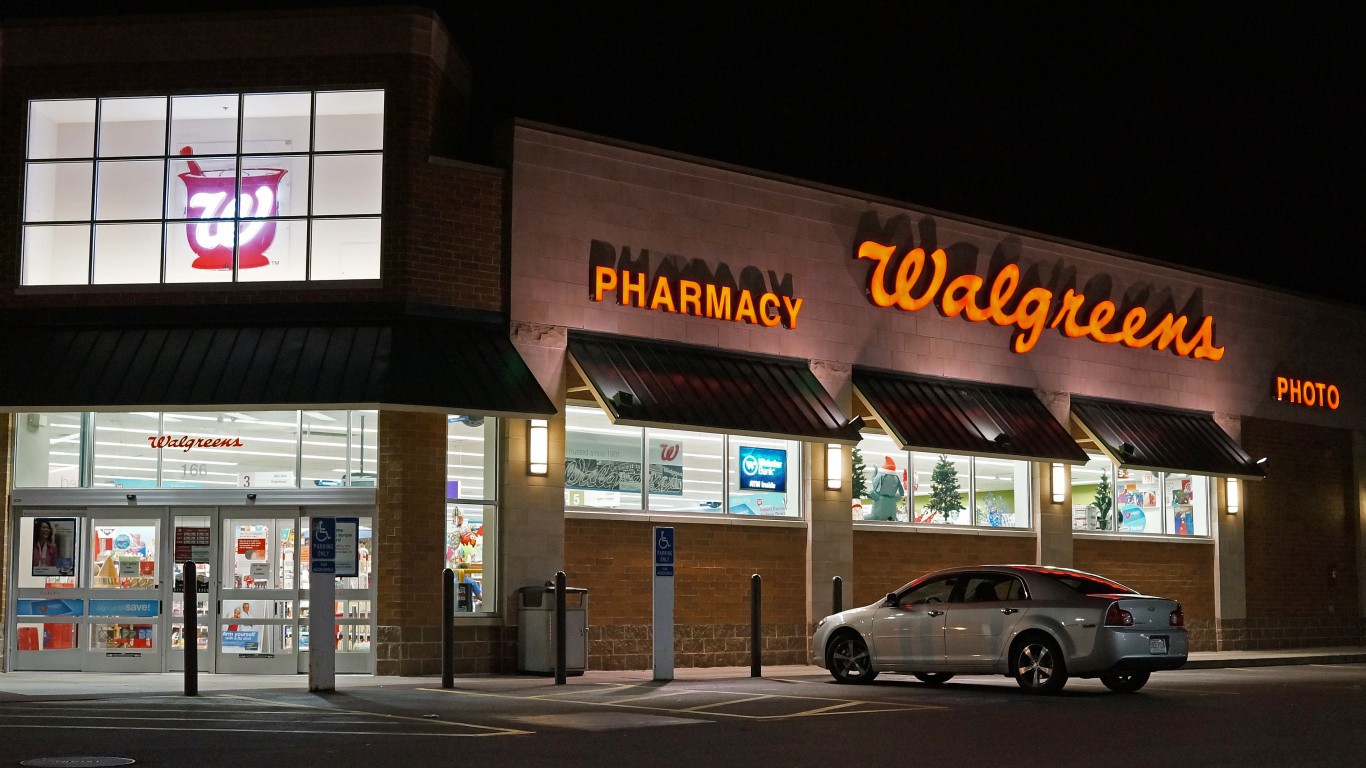
6. Walgreens Boots Alliance, Inc. (NASDAQ: WBA)
> Current stock price: $67.51
> Latest annual revenue: $131.54 billion
> Industry: Food and drug stores
image-subject=Walgreens Boots Alliance, Inc.
Drugstore chain Walgreens stock tumbled by nearly 40% from July 2015 to June 2018, reaching its lowest point since 2014. According to the company, investors may have devalued the stock in response to weak overseas markets and increasing consolidation among Walgreens’ competition with strategic partners in the insurance and pharmacy benefits segments. Competitor CVS recently acquired health insurer Aetna, and health insurer Cigna completed a merger with pharmacy benefit management company Express Scripts, consolidating control of drug benefit administration to just a few companies. News that online retail giant Amazon would be entering the health care market through its acquisition of online pharmacy PillPack also caused jitters among Walgreens investors.
In the second half of 2018, however, Walgreens has shown signs of a rebound. The company’s stock rose a rapid 41% from June 2018 to November 2018, coinciding with an 88% increase in profit from the third quarter of 2017 to the third quarter of 2018.
[in-text-ad]
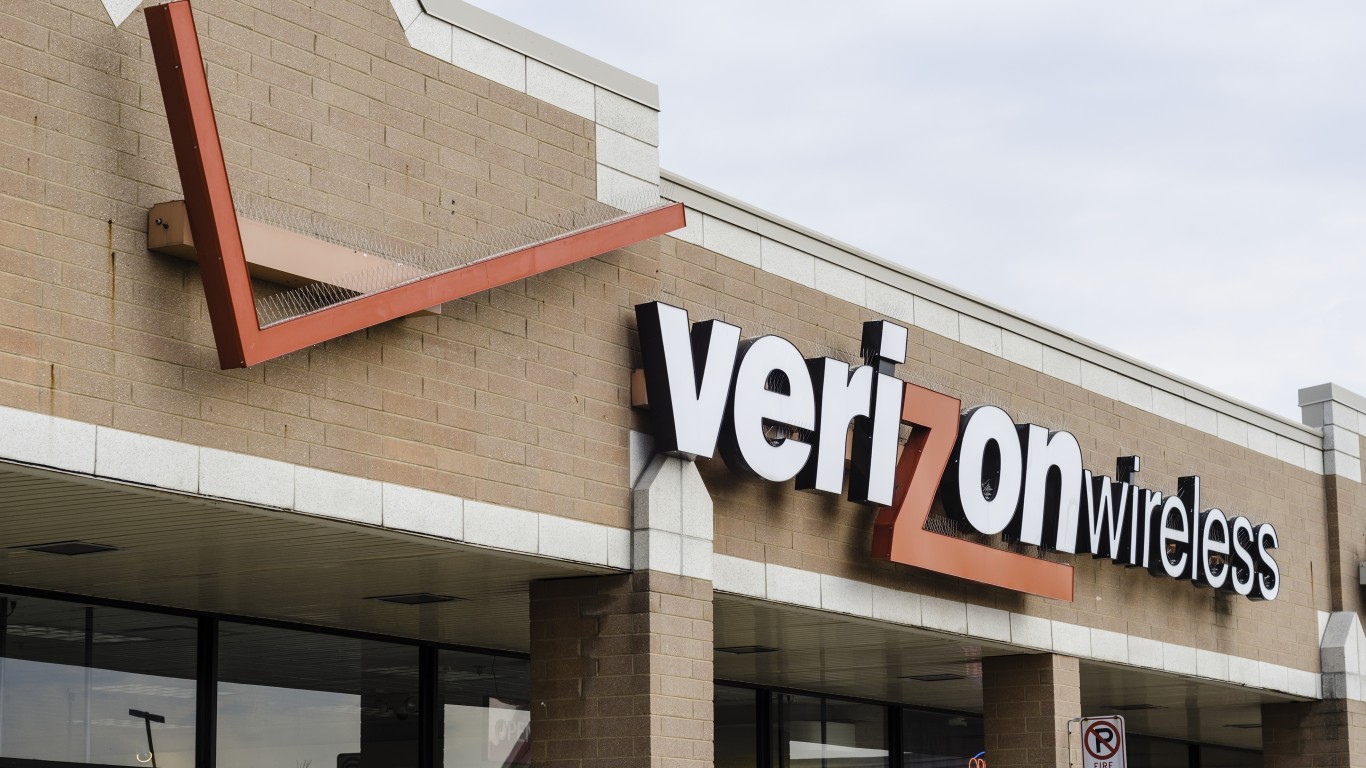
7. Verizon Communications (NYSE: VZ)
> Current stock price: $54.47
> Latest annual revenue: $126.03
> Industry: Telecommunications
image-subject=Verizon Communications
After a steady decline from July 2016 to July 2017, 22% drop over the period, Verizon’s stock has had a significant comeback, rising 38% from July 2017 to November 2018 and reaching its highest point in 18 years. The rise in share price coincided with a strong fourth quarter in 2017 driven by strong customer growth and retention. Verizon also increased its cash flow as a result of the new tax-reform legislation, which also led the company to post record profits. Verizon reported a net income of $18.7 billion in fourth quarter of 2017, more than four times the profit reported for the fourth quarter of 2016. The company reported third quarter of 2018 profits of $19.3 billion — its highest quarterly figure in at least several years.
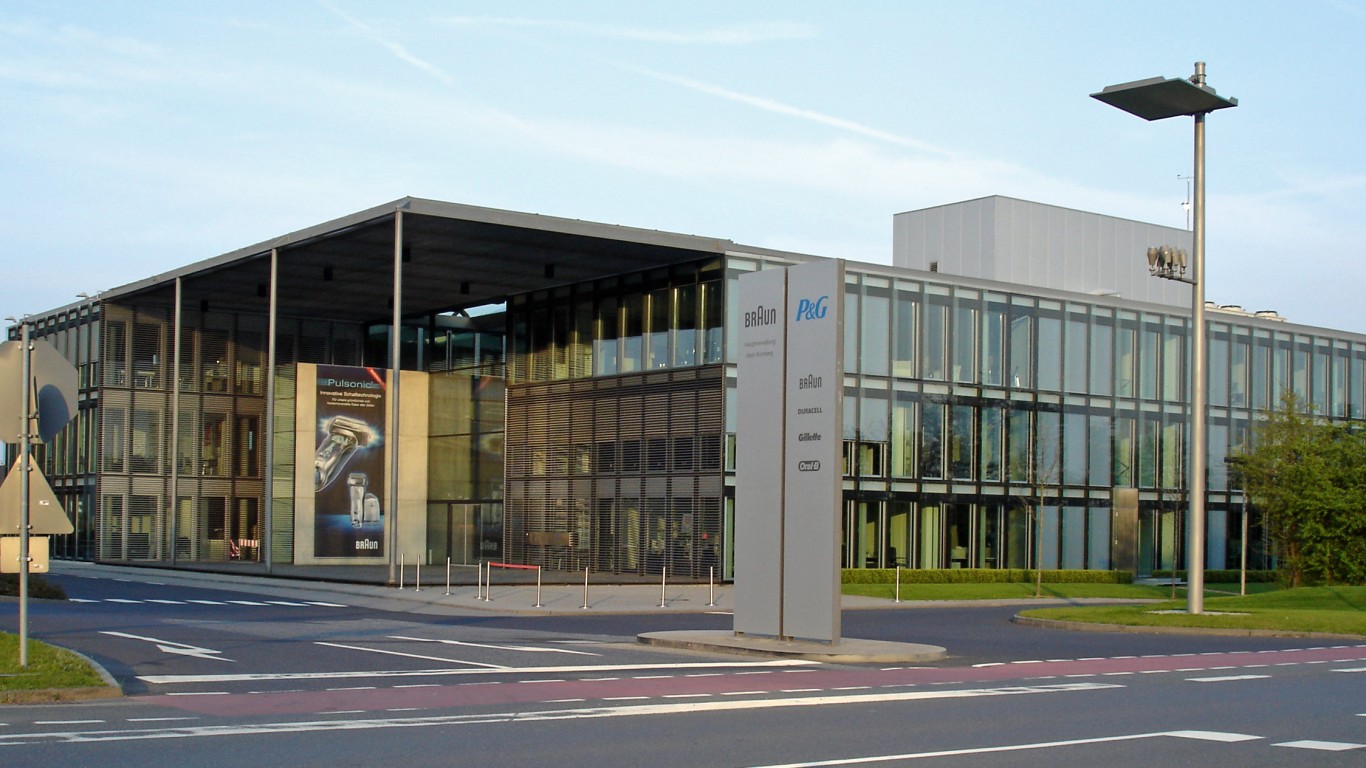
8. Procter & Gamble (NYSE: PG)
> Current stock price: $91.27
> Latest annual revenue: $66.83 billion
> Industry: Household and personal products
image-subject=Procter & Gamble
Consumer goods company Procter & Gamble stock fell more than 20% from October 2017 to April 2018, coinciding with falling profits.The company reported sales that missed analyst expectations in the fourth quarter of fiscal 2018. The sluggish sales were due in part to lower pricing and weak demand for Pampers diapers and Gillette shaving products. P&G lowered prices during the quarter on its grooming products in order to compete with smaller startups, such as Dollar Shave Club, as well as the low prices offered by Amazon.
Since hitting its April trough, P&G stock has climbed 33% to $96.64 on Dec. 10, 2018, its highest point since its 1978 IPO. The increase was likely the result of a strong first quarter report for their fiscal 2019. P&G posted a 4% increase in organic sales, the fastest growth in five years. The company reported revenue of $16.7 billion, $240 million ahead of expectations.
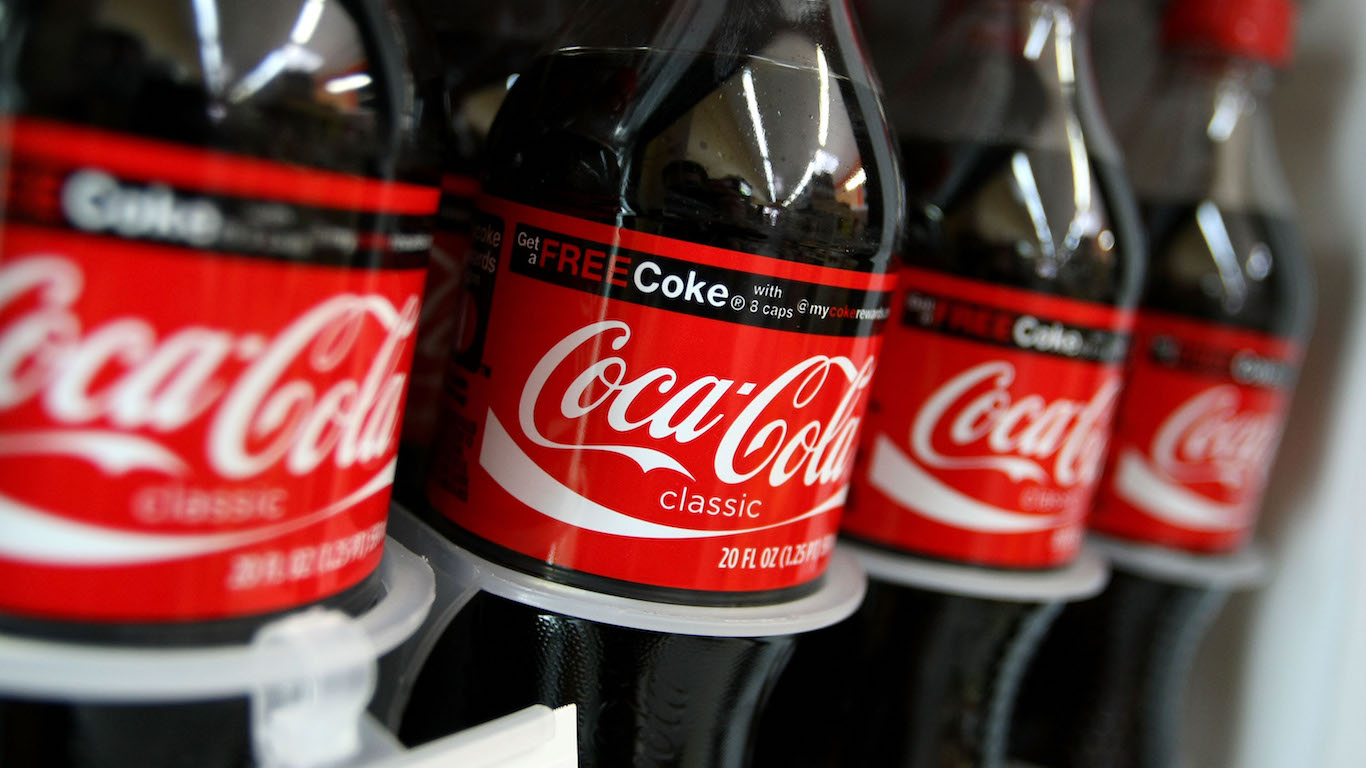
9. The Coca-Cola Company (NYSE: KO)
> Current stock price: $47.51
> Latest annual revenue: $35.41 billion
> Industry: Beverages
image-subject=The Coca-Cola Company
Coca-Cola is one of many consumer staples stocks to have had a rough first half of 2018. Partially due to rising interest rates, which caused investors to move their money from high-dividend staple stocks to high-yielding bonds, Coca-Cola fell 13%.
On the heels of strong third quarter 2018 earnings, however, Coca-Cola stock has rallied for much of the second half of the year. The company reported a net income of $1.9 billion in the third quarter, compared to a net loss of $2.8 billion. Coca-Cola stock rose 20% over the seven months ending Nov. 26, 2018 to $50.40, the highest point in the history of the stock.
Credit card companies are at war. The biggest issuers are handing out free rewards and benefits to win the best customers.
It’s possible to find cards paying unlimited 1.5%, 2%, and even more today. That’s free money for qualified borrowers, and the type of thing that would be crazy to pass up. Those rewards can add up to thousands of dollars every year in free money, and include other benefits as well.
We’ve assembled some of the best credit cards for users today. Don’t miss these offers because they won’t be this good forever.
Flywheel Publishing has partnered with CardRatings for our coverage of credit card products. Flywheel Publishing and CardRatings may receive a commission from card issuers.
Thank you for reading! Have some feedback for us?
Contact the 24/7 Wall St. editorial team.